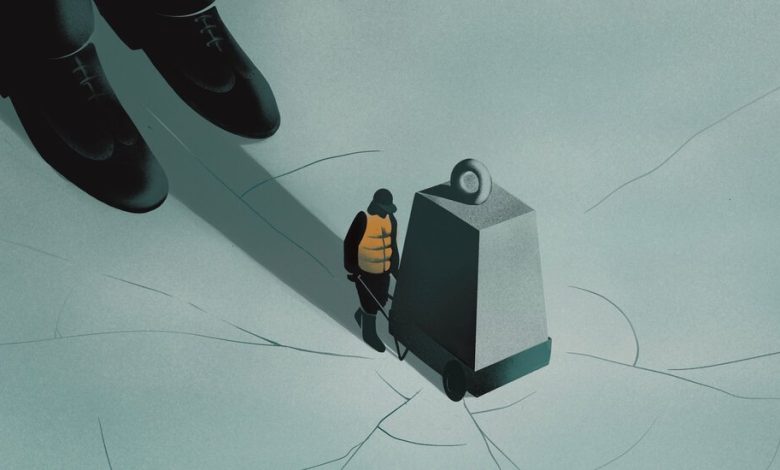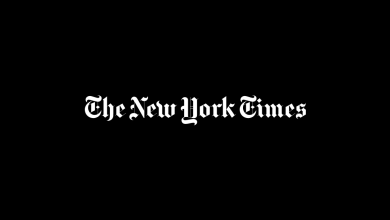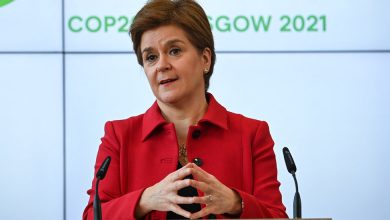Defaults Loom as Poor Countries Face an Economic Storm

WASHINGTON — Developing nations are facing a catastrophic debt crisis in the coming months as rapid inflation, slowing growth, rising interest rates and a strengthening dollar coalesce into a perfect storm that could set off a wave of messy defaults and inflict economic pain on the world’s most vulnerable people.
Poor countries owe, by some calculations, as much as $200 billion to wealthy nations, multilateral development banks and private creditors. Rising interest rates have increased the value of the dollar, making it harder for foreign borrowers with debt denominated in U.S. currency to repay their loans.
Defaulting on a huge swath of loans would send borrowing costs for vulnerable nations even higher and could spawn financial crises when nearly 100 million people have already been pushed into poverty this year by the combined effects of the pandemic, inflation and Russia’s war in Ukraine.
The danger poses another headwind for a world economy that has been sputtering toward a recession. The leaders of the world’s advanced economies have been grappling privately in recent weeks with how to avert financial crises in emerging markets such as Zambia, Sri Lanka and Ghana, but they have struggled to develop a plan to accelerate debt relief as they confront their own economic woes.
As rich countries brace for a global recession and try to cope with high food and energy prices, investment flows to the developing world have been abating and big creditors, particularly China, have been slow to restructure loans.
Mass defaults in low-income countries are unlikely to spur a global financial crisis given the relatively small size of their economies. But the potential is causing policymakers to rethink debt sustainability in an era of rising interest rates and increasingly opaque loan transactions. In part, that’s because defaults can make it harder for countries like the United States to export goods to indebted nations, further slowing the world economy and possibly leading to widespread hunger and social unrest. As Sri Lanka drew closer to its default this year, its central bank was forced to arrange a barter agreement to pay for Iranian oil with tea leaves.
“Finding ways to reduce the debt is important for these countries to get to the light at the end of the tunnel,” said David Malpass, the World Bank president, in an interview at the summit for the Group of 20 nations last month in Bali, Indonesia. “This burden on the developing countries is heavy, and if it goes on, they continue to get worse, which then has impacts on advanced economies in terms of increased migration flows and lost markets.”
The urgency follows lockdowns to contain the coronavirus in China and Russia’s war in Ukraine, which have stunted global output and sent food and energy prices soaring. The Federal Reserve has been rapidly raising interest rates in the United States, bolstering the strength of the dollar and making it more expensive for developing countries to import necessities for populations already struggling with rising prices.
Economists and global financial institutions such as the World Bank and the International Monetary Fund have been raising alarm about the gravity of the crisis. The World Bank projected this year that about a dozen countries could face default in the next year, and the I.M.F. calculated that 60 percent of low-income developing countries were in debt distress or at high risk of it.
Since then, the finances of developing countries have continued to deteriorate. The Council on Foreign Relations said this past week that 12 countries now had its highest default rating, up from three 18 months ago.
Inflation F.A.Q.
What is inflation? Inflation is a loss of purchasing power over time, meaning your dollar will not go as far tomorrow as it did today. It is typically expressed as the annual change in prices for everyday goods and services such as food, furniture, apparel, transportation and toys.
What causes inflation? It can be the result of rising consumer demand. But inflation can also rise and fall based on developments that have little to do with economic conditions, such as limited oil production and supply chain problems.
Is inflation bad? It depends on the circumstances. Fast price increases spell trouble, but moderate price gains can lead to higher wages and job growth.
How does inflation affect the poor? Inflation can be especially hard to shoulder for poor households because they spend a bigger chunk of their budgets on necessities like food, housing and gas.
Can inflation affect the stock market? Rapid inflation typically spells trouble for stocks. Financial assets in general have historically fared badly during inflation booms, while tangible assets like houses have held their value better.
Brad Setser, a senior fellow at council, estimates that $200 billion of sovereign debt in emerging markets needs to be restructured.
“It is certainly a systemic problem for the countries that are affected,” Mr. Setser said. “Because an unusually large number of countries borrowed from the market and borrowed from China between 2012 and 2020, there’s an unusually large number of countries that are in default or at risk of default.”
Restructuring debt can include providing grace periods for repayment, lowering interest rates and forgiving some of the principal amount that is owed. The United States has traditionally led broad debt-relief initiatives such as the “Brady Bond” plan for Latin America in the 1990s. However, the emergence of commercial creditors that lend at high rates and prolific loans from China — which has been loath to take losses — has complicated international debt relief efforts.
Fitch, the credit rating firm, warned in a report last month that “more defaults are probable” in emerging markets next year and lamented that the so-called Common Framework that the Group of 20 established in 2020 to facilitate debt restructuring “is not proving effective in resolving crises quickly.”
Since the framework was established, only Zambia, Chad and Ethiopia have sought debt relief. It has been a grinding process, involving creditor committees, the International Monetary Fund and the World Bank, all of which must negotiate and agree upon how to restructure loans that the countries owe. After two years, Zambia is finally on the verge of restructuring its debts to China’s state banks, and Chad reached an agreement last month with private creditors, including Glencore, to restructure its debt.
Bruno LeMaire, the French finance minister, said that the progress with Zambia and Chad was a positive step, but that there was much more work to be done with other countries.
“Now we should accelerate,” Mr. Le Maire said on the sidelines of the Group of 20 summit.
China, which has become one of the world’s largest creditors, remains an obstacle to relief. Development experts have accused it of setting “debt traps” for developing countries with its lending program of more than $500 billion, which has been described as predatory.
“This is really about China being unwilling to admit its lending has been unsustainable and China dragging its feet in getting to deals,” said Mark Sobel, a former Treasury Department official and the U.S. chairman of the Official Monetary and Financial Institutions Forum.
The United States has regularly urged China to be more accommodating and complained that Chinese loans are difficult to restructure because of the opaque terms of the contracts. It has described China’s lending practices as “unconventional.”
“China is not the only creditor holding back quick and effective implementation of the typical playbook,” said Brent Neiman, a counselor to Treasury Secretary Janet L. Yellen, in a speech in Washington in September. “But across the international lending landscape, China’s lack of participation in coordinated debt relief is the most common and the most consequential.”
China has accused Western commercial creditors and multilateral institutions of failing to do enough to restructure debts and denied that it has engaged in predatory lending.
“These are not ‘debt traps,’ but monuments of cooperation,” Wang Yi, China’s foreign minister, said this year.
China’s own economy is slowing because of its strick “zero Covid” policy, which has included mass testing, quarantines and lockdowns of its population. A domestic real estate crisis has also made it more difficult for China to accept losses on loans that it has made to other countries.
I.M.F. officials will travel to Beijing this coming week for a “1+6” roundtable with the leaders of major international economic institutions. During those meetings, they will help China better understand the process of debt restructuring through the common framework.
Ceyla Pazarbasioglu, the director of the strategy, policy and review department at the I.M.F., acknowledged that agreeing to terms on debt relief could take time, but said she would convey the urgency to Chinese officials
“The problem we have is that we don’t have the time right now because countries are very fragile in dealing with debt vulnerability,” Ms. Pazarbasioglu, who will travel to China, told reporters at the I.M.F. this past week.
At the annual meetings of the I.M.F. and World Bank in Washington in October, policymakers said the pace of debt restructuring was too slow and called for coordinated action among creditors and borrowers to find solutions before it was too late.
During a panel discussion about debt restructuring, Gita Gopinath, the first deputy managing director of the I.M.F., said countries and creditors needed to avoid the kind of wishful thinking that led to defaults.
“There is very much the tendency to gamble for redemption,” Ms. Gopinath said. “There’s very much a tendency for creditors to hope there will be gambling for redemption, and then nothing gets solved.”
But at the conclusion of the Group of 20 meeting in November, it appeared that little progress had been made. In a joint declaration, the leaders expressed their concern about the “deteriorating debt situation” in some vulnerable middle-income countries. However, they offered few concrete solutions.
“We reaffirm the importance of joint efforts by all actors, including private creditors, to continue working toward enhancing debt transparency,” the statement read.
The statement included a footnote saying that “one member has divergent views on debt issues.” That country, according to people familiar with the matter, was China.
In the interview, Mr. Malpass said that China had been willing to discuss debt relief, but that the “devil is in the details” when it comes to restructuring loans to reduce debt burdens.
The World Bank president predicted that the fiscal problems facing developing countries were unlikely to become a global debt crisis of the kind that occurred in the 1980s when many Latin American countries could not service their foreign debt. He suggested, however, that there was a moral imperative to do more to help poor countries and populations that had been pushed deeper into poverty during the pandemic.
“There would be continued reversals in development in terms of poverty, in terms of hunger and malnutrition, which are already going up,” Mr. Malpass said. “And it’s coming at a time when countries need more resources, not less.”




